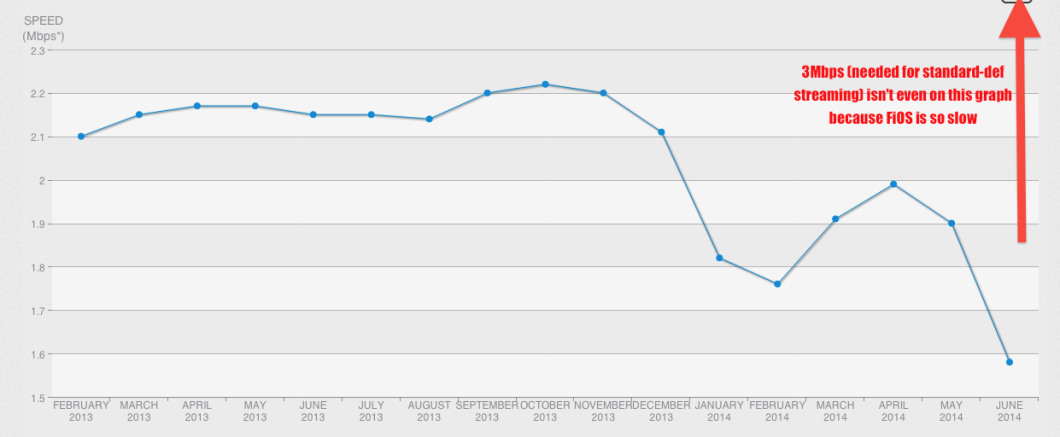Netflix Is So Slow On FiOS That It’s Faster To Watch Videos Through VPN
A VPN (or virtual private network) is a way of extending a private network — a company’s intranet, for example — over a public network, like the Internet.
So say I have Verizon here in Philadelphia (I don’t, but let’s just say I do) for my home Internet access and that Verizon has a horrible history with streaming video company FlixNet. Now say my employer in New York uses an Internet provider that has no issues with FlixNet. If I access FlixNet through my employer’s VPN, the initial FlixNet signal will be going through that non-Verizon Internet provider. It will eventually come to me via Verizon, but Verizon will see it as traffic from my employer’s network and not from FlixNet.
This is one way in which some users of streaming services like baseball’s MLB.tv get around local blackouts. If I’m blacked out of watching a game online because MLB.tv knows I’m in the local TV market for that game, connecting to a VPN can be used to trick MLB.tv into thinking I’m in another city. However, the additional passing around of all this data can result in bad connections, so it’s a way of getting around location-based checks, but it’s not supposed to improve the speed of you connection.
And yet…
In the below video, Colin Nederkoorn [via Ars Technica] demonstrates just how achingly bad his Netflix service is on FiOS. That “buffering” swirl in the middle of the screen for the first minute or so of the clip isn’t YouTube buffering, it’s his computer attempting to stream a Netflix test video that shows users what level of quality to expect from their connection.
When the video does eventually begin to stream, it’s only at .375Mbps, that’s 1/8 the 3Mpbs that Netflix recommends users have for accessing standard definition video.
More insulting to Colin, it’s only .5% of the 75Mbps downstream speed he’s supposed to be receiving from his high-tier FiOS service.
But then he connects to Netflix via a VPN service, figuring “What the heck?”
“My hypothesis here was that by connecting to a VPN, my traffic might end up getting routed through uncongested tubes,” he explains. “Basically, if Verizon is not upgrading the tubes that go to Netflix, maybe I can connect to a different location (via VPN) first where Verizon will have good performance and there will be no congestion between location 2 and Netflix.”
And his idea worked, with the VPN giving him an acceptable, if still relatively slow, 3Mbps stream.
“It seems absurd to me that adding another hop via a VPN actually improves streaming speed,” says Colin. “Clearly it’s not Netflix that doesn’t have the capacity. It seems that Verizon are deliberately dragging their feet and failing to provide service that people have paid for. Verizon, tonight you made an enemy, and doing my own tests have proven (at least to me) that you’re in the wrong here.”
Want more consumer news? Visit our parent organization, Consumer Reports, for the latest on scams, recalls, and other consumer issues.


